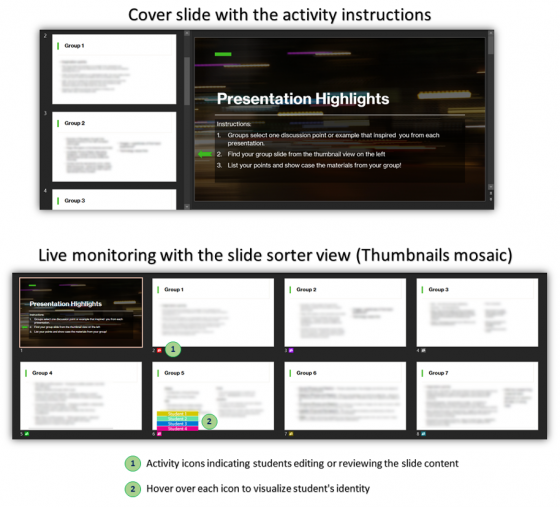I am a staunch believer in the importance of face to face teaching and learning in the classroom. My dilemma has been how to establish this successfully online. Over the last 20 years or more, I have developed principles of dialogic learning. This approach encourages dialogue between teachers and students through active learning activities. I have come to recognise how much ‘online dialogue’ is different from face to face encounters. This might seem obvious, but it does require a different approach to the learning experience, and it took me awhile to learn and to adapt to this situation.
In response to this dilemma, in my course ARTS 3872 Media, Culture and Power I converted a group-led facilitation assessment run face to face into a small group presentation experience in the virtual classroom. Designed for Zoom breakout rooms, this new assessment involved students presenting on a theme or topic from the course, based on their own area of inspiration and interest. It required students to pose a question to their peers based on their presentation. Each student had up to 10 minutes for their presentation and discussion, and each group had a chair and timekeeper.
Although I had carefully worked through the activity, it did make me nervous. How was I going to monitor the discussion? How could I be in dialogue with students without ‘popping’ in and out unexpectedly into their breakout rooms, potentially disrupting their flow and rhythm? Thinking it through, I came up with the idea of students creating ‘highlights’ from their presentations, to be discussed at the end, in the main room. Something was still missing in this approach: the ‘live’ element of dialogue.
Across the term, I consulted with Walter Tejada Estay, from Educational Design and Development Services, PVCE. Walter suggested using Microsoft PowerPoint 365’s live collaboration capability – where students could simultaneously work in the same file on their presentational highlights, each group could see each other’s content and I could monitor and respond as well.
This prospect made me feel more confident about the activity. I felt more of a sense of ‘trust’ that students would know the ‘teacher’ was present, interested and ‘in dialogue’ with them. I saw it as an opportunity to build and create a dialogue in a virtual space in which ‘speaking’ is not always apparent or possible. It provided a way to monitor what was happening in breakout rooms, ask students questions and respond where necessary. It also became a good record of the live ‘content’ and discussion throughout the small group presentations.
Through informal feedback and surveys, students indicated they found this experience rewarding. This encouraged me to ‘build’ more activities. I have learnt that online dialogue involves rethinking teaching skill sets (with all the necessary time and labour involved in this process). I would suggest this experience involves rethinking classroom dialogue as form of building in the virtual space. As the philosopher Martin Heidegger states, ‘we can only build when we are capable of dwelling’.
Translated in this context, it might mean attentiveness to dialogue in the virtual space involves learning how to inhabit the space and adapt to the environment with care. I think this is a real challenge: how do we give genuine qualities of dialogue, feedback and aliveness in the virtual classroom? It is the subject of an essay I am working on around care in the classroom right now.
For assistance using Microsoft PowerPoint 365’s live collaboration capability to employ dialogic learning in your online course, reach out to EDDS, PVCE via their educational consultation booking form.
